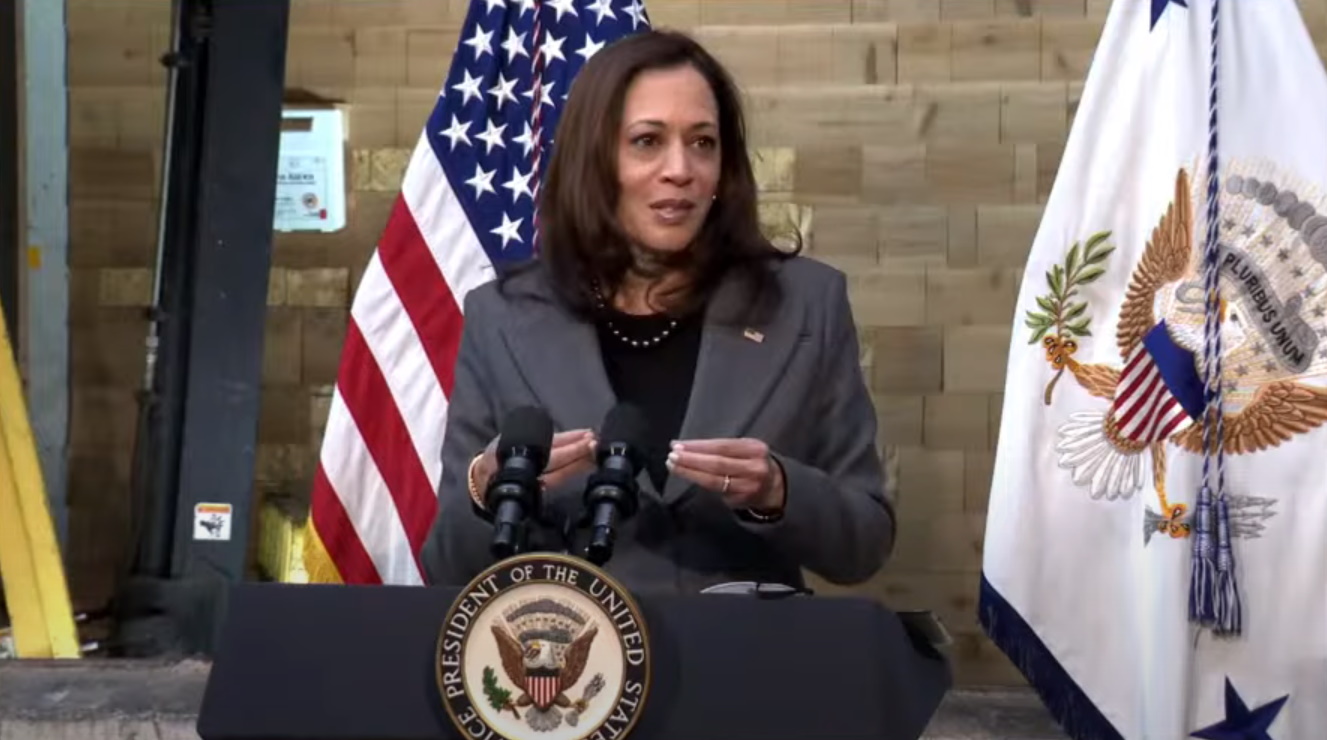VP Harris Touts Lead Pipe Removal In Milwaukee Visit
Wisconsin will receive $48 million in 2022 from federal infrastructure package.
Vice President Kamala Harris visited Milwaukee on Monday to tout the benefits of the Bipartisan Infrastructure Law.
The $1.2 trillion package, passed in November, is expected to include $48 million for lead pipe replacement in Wisconsin in 2022.
Harris met with leaders and trainees at WRTP/BIG STEP, a nonprofit job training organization located at 3841 W. Wisconsin Ave.
“We have to finally take this issue not as a measure of a concern, but a measure of impact,” said Harris in a speech. “The bottom line is: eliminating lead exposure in our nation must be among our highest priorities.”
She noted that 50% of children in the country are either exposed to lead or at risk of exposure. “The only solution here is to get rid of lead, in our pipes, in our paint,” said the vice president.
It won’t be enough to replace all of Milwaukee’s estimated 73,000 lead service lines. A 2018 city report estimated the cost to replace all of them at $750 million. The Milwaukee Water Works has a current goal of replacing 1,100 lines per year, largely done alongside other public works projects.
“These investments will create good union jobs. These investments will address the needs of our children. These investments will result in improved public health, the creation of more jobs, the infusion of support for important apprenticeship programs and it’s just simply the right thing to do, long overdue, but the right thing to do,” said Harris.
Before delivering her marks, Harris spoke with three different groups at the facility.
Deanna Branch, whose son was previously afflicted by lead poisoning and still has lingering effects, showed the vice president pictures of the “lead monster” her son had drawn. “It means a lot to me and my community that I am hearing and talking to you on their behalf,” she said. Branch later introduced Harris for her live-streamed speech.
Rashawn Spivey of Hero Plumbing explained the company’s work to her, and a pool report notes that Harris had to ask what a lead lateral was (it’s another name for the lead service line that connects a building to the water system). On Tuesday, another pool reporter told Urban Milwaukee that Harris’ question was an attempt to make conversation.
Harris also heard about the health implications for children from Dr. Heather Paradis, a pediatrician with Children’s Hospital of Wisconsin and the deputy commissioner of medical services and chief medical officer for the Milwaukee Health Department.
Harris was joined in her visit by Environmental Protection Agency regional administrator Michael Regan.
“Investing in our water infrastructure is one of the best decisions we can make as a nation,” said Regan.
Harris’ husband, Second Gentleman Douglas Emhoff, flew with her to Milwaukee, but visited the Milwaukee Youth Arts Center to talk about federal venue relief funding.
In addition to Branch and Regan, Harris was introduced by Oak Creek mayor and Milwaukee Building Construction Trades Council president Dan Bukiewicz, Congresswoman Gwen Moore and Senator Tammy Baldwin. None of their remarks were streamed live. Governor Tony Evers and Air National Guard Brigadier General David May greeted her at the airport.
Milwaukee and Wisconsin have struggled with lead poisoning. A 2021 study found the state was one of six in the country to have a poisoning rate double the national average. The Milwaukee Health Department had a high-profile failure in 2018 in its childhood poisoning prevention program and has had other hiccups along the way.
The pandemic didn’t help. The number of children being tested fell and the Milwaukee Water Works (MWW) replacement rate slowed as a result of residents not wanting workers inside their home to replace the private side of the lateral.
The capacity to perform lead abatement has repeatedly been an issue debated at City Hall, both for lead pipes and lead paint. In July, MWW Superintendent Karen Dettmer said that local contractor capacity was approximately 2,000 laterals per year. In October the Common Council approved allocating more than $26 million from the city’s American Rescue Plan Act grant to train new lead paint remediation contractors and to cover the cost of the additional work expected from lowering the intervention threshold for childhood blood-lead levels.
The health department received a $5.6 million, 42-month lead paint and soil abatement grant in 2019, estimated to cover the abatement of 320 homes.
Any house built before 1978, which accounts for most of the homes in the city, is likely to include lead paint. The last lead service line in the city was installed in 1962 (1952 for the publically-owned side of the pipe).
UPDATE: An earlier version of this article said $48 million would be going directly to Milwaukee. That money will go to the state and be divided. Milwaukee, under state DNR rules, could still receive a similar amount over the life of the infrastructure law.
If you think stories like this are important, become a member of Urban Milwaukee and help support real, independent journalism. Plus you get some cool added benefits.




















I wonder when Vos will try to figure out a way to steal the money.
do you have any video supporting
” a pool report notes that Harris had to ask what a lead lateral was”
@Kevin – I don’t directly have access to it, because we are not part of the video pool, but one would exist.
“At the second stop she heard from two workers from HERO Plumbing about their work to replace lead ‘laterals’. VP asked what a lead lateral was, and the worker said it was the pipe leading from public water supply to buildings.” is the line in the print pool report
@Kevin – I reached out to another pool reporter at the event. They believe Harris’ question was a good-natured attempt to create conversation. The print pool report didn’t make that clear so I’ve added that second opinion to the piece.